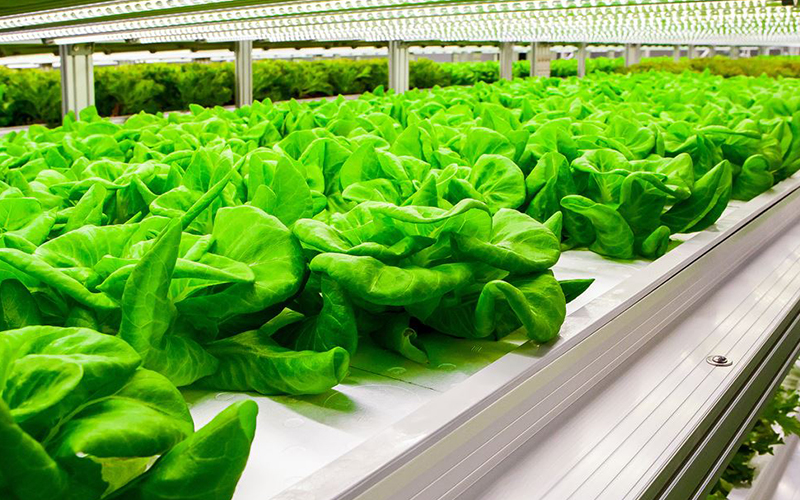With the rising popularity of indoor cultivation, especially for high-value crops like medical cannabis, the demand for commercial led grow lights has surged, anticipated to increase fivefold by 2025. This trend underscores the growing market for the best commercial led grow lights, as growers seek cost-effective, quality solutions to enhance yield.
With the advantage of high energy-efficiency, flexible spectrum customization, low heat generation, long lifetime of LED grow lights becoming more and more manifest. Therefore, commercial plant cultivation companies have started a revolution in horticulture lighting industry for replacing traditional lights with LEDs. Especially in indoor cannabis cultivation facilities and organic vegetable vertical plant factories, LED grow light has shown its great advantage in reducing long term operation cost and improving the yield in terms of both quantity and quality.
At the same time, how to choose the best grow lights for commercial indoor plant cultivation is one of the most significant concerns for most plant growing companies.
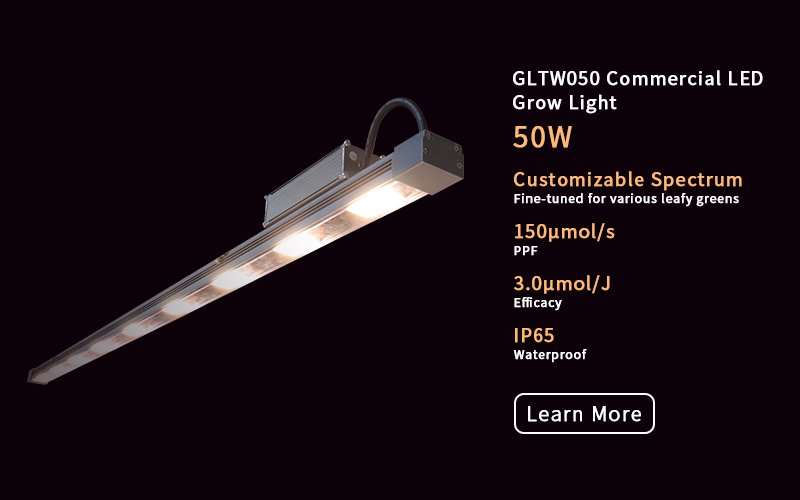
Commercial LED Grow Lights in Cannabis Cultivation
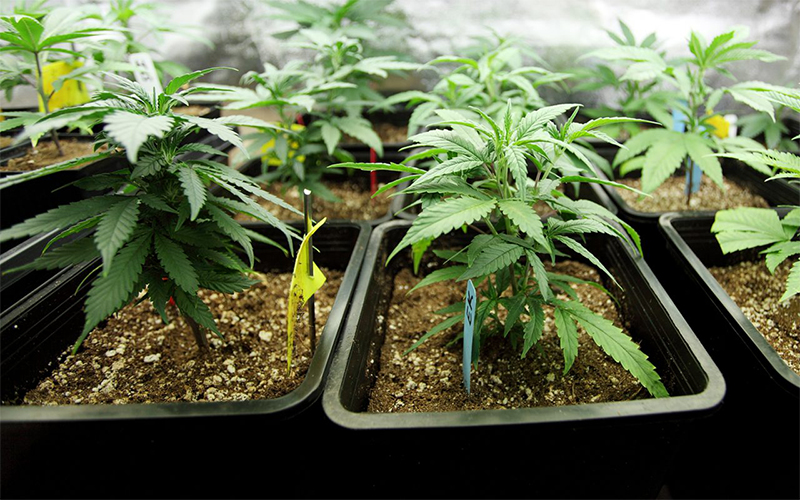
Because most top-quality cannabis cultivars that have the highest market values have been developed from generations of genetic optimization in indoor environments, and many of these delicately-breed cultivars are unsuitable for greenhouse or field cultivation, therefore indoor cultivation with artificial lighting has been proved to produce the best quality of cannabis. When it comes to choosing the truly commercial grade LED grow lights for large scale cultivation, we can evaluate a LED grow light from three aspects: hardware components, light spectrum, lifetime.
What it is made of?
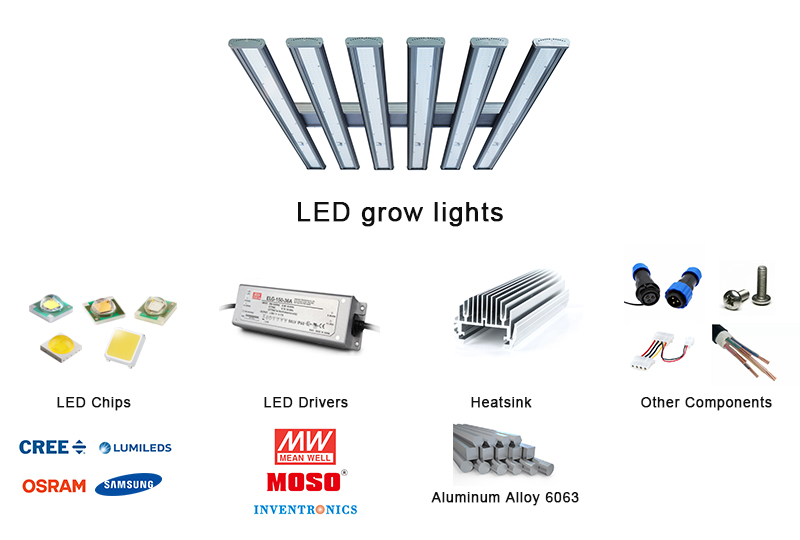
This very easy to understand. Though top quality hardware components do not necessarily make the final products to be top quality if the manufacturer sucks on the production processes. But a top quality commercial LED grow lights certainly means that it is made of top quality hardware components. With LED lighting industry has become more and more transparent, it is easy to find out the top level suppliers of LED grow lights components, such as LED chips of Samsung/Osram/Lumileds/Cree, LED drivers of Meanwell/Inventronics/Moso. LED grow light is not some very sophisticated equipment, you can easily find out what the manufacturer used in its lights by open-check, or by just asking directly your supplier.
The light spectrum
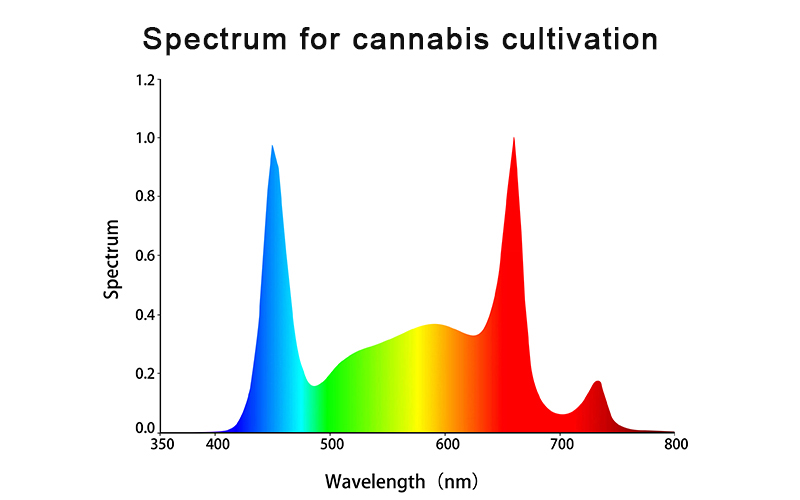
Actually, it is hard to tell if one spectrum is the best for your cannabis or not. By now there is no such thing as a widely-approved set of standards to access the performance of light spectrum simply by looking at its chart. Let alone cannabis has so many strains that different strains may respond differently to same light spectrum.
But generally speaking, a commercial LED grow lights suitable for cannabis cultivation should be equipped with a spectrum having at least several features as:
Broadband full spectrum to cover whole 400nm-700nm PAR area
Including a small amount of Infrared light, but not too much, no more than 10%.
The two wavelengths with highest light intensity of the spectrum should be at blue(450nm-460nm) and red(650-660nm)
The red:blue ratio should be about 1.0-1.2, in order to keep a balanced performance for both vegetative and flowering stages which is essential for high quality yield of buds.
Except the spectrum of the light emitted by the grow lights, the PPFD distribution should be as uniform as possible. And the average PPFD level in a commercial cultivation facility should be above 1000 μmol/m2/s, because CO2 enrichment is a common practice in most commercial cannabis growing facilities. Only under higher PPFD level, the plants can effectively use the enriched CO2 for photosynthesis.
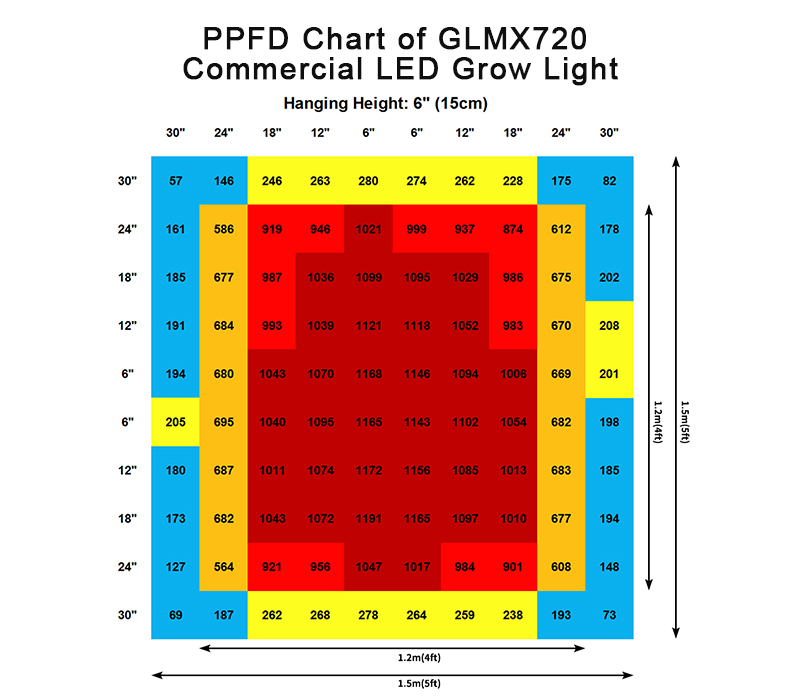
The lifetime
Of course, it is impossible to tell at the beginning that how long a LED grow light can work, but there are three measurements you can count on to evaluate whether it is a truly commercial grade LED grow light. L90/L80/L70 Lifetime, Thermal Design, Warranty.
L90, L80, L70 Life Time
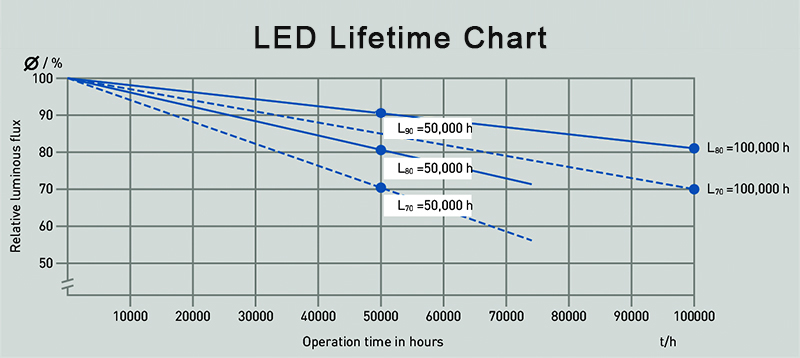
The L90 lifetime of a LED light is defined as the time, usually in hours, it takes until its light output, reaches 90% of the initial output at the same full power consumption.
If a 600W LED grow light has an L90 life time of 50000 hours, it means, after 50000 hours of life, it can still deliver a 90% light output of the initial full intensity at power consumption of 600W.
So does the L80 and L70 lifetime. The basic standards in LED lighting industry is L70>50,000 hours. Some top quality LED grow lights made with high efficacy LED chips and efficient thermal dissipation design can achieve an L90 life time more than 50,000 hours.
Customer can ask supplier to provide L90 lifetime reports of the LED chips for a reference to evaluate the total lifetime of the grow light.
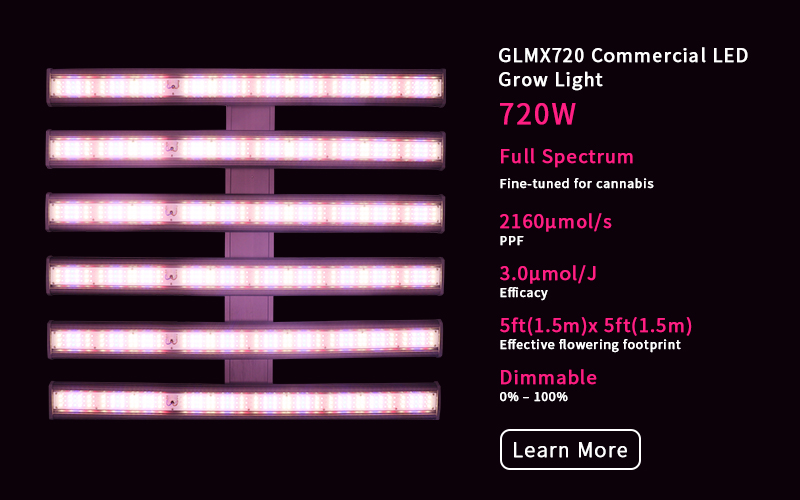
Thermal Design - Temperature Control
As we can see that the lumen degradation in the L90 life time is not only fundamentally related to the quality of the LED chips, but also largely depending on the working temperature of the LED chips. Generally, the higher the temperature is, the shorter the lifetime is. Commercial LED grow lights with great thermal design can limit the LED fixture temperature within 55 Celsius degree, or even below 50 Celsius degree.
Warranty
The decent LED grow lights manufacturer delivering truly high quality commercial LED grow light should at least provide a warranty period of five years.
Commercial LED Grow Lights in Vertical Farming of Leafy Greens
When it comes to commercial LED grow lights for leafy greens, it is basically the same measurements of cannabis. There are just two differences we need to note, Spectrum, Power.
Spectrum suitable for leafy greens
How to choose the best spectrum for LED grow lights for growing leafy greens is much easier and simpler compared to cannabis. There are two widely-used spectra which have been proved to deliver high quality yield for leafy greens.
3000K Warm White
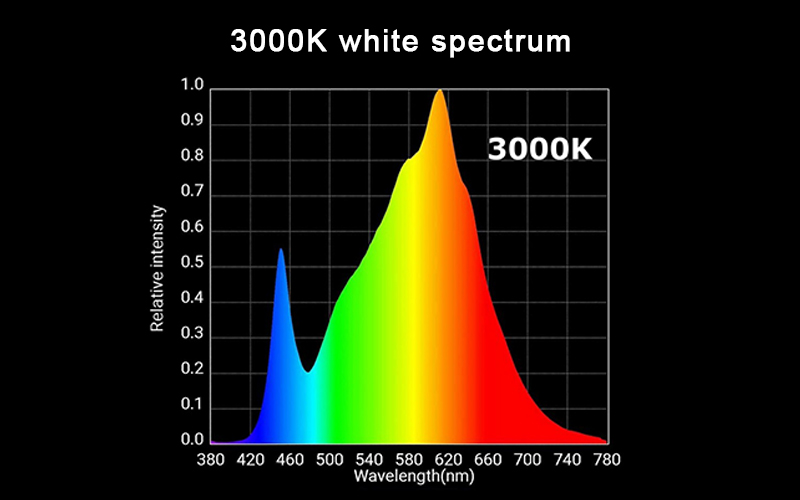
This spectrum is suitable for growing leafy greens with requirements of stretching to be relatively longer and thinner, such as Basil, Microgreens, Kale, Cilantro, Arugula, Spinach, Dandelion Greens, Chard, Turnip Greens, etc.
High Red/Blue Ratio Spectrum
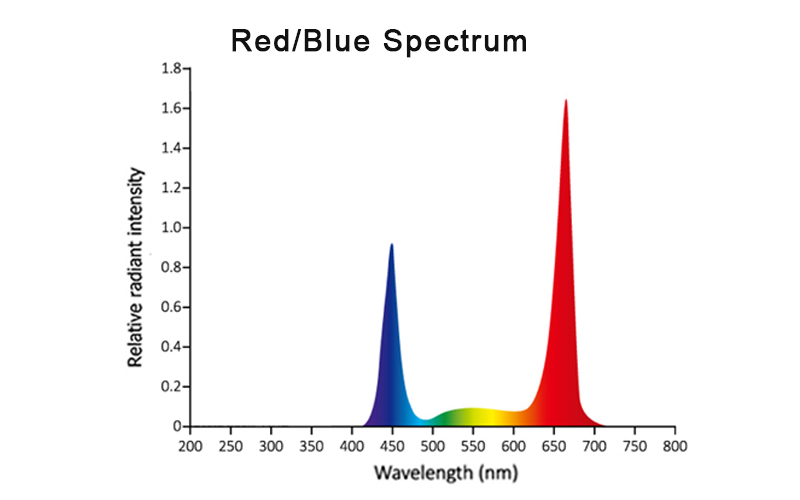
If you are growing leafy greens that are desired to be short and compact with thick leaves and strong stems, this High Red/Blue Ratio Spectrum should be equipped with your commercial LED grow lights. The typical leafy greens of this type are Butter Lettuce, Cabbage, Collards, Bok choy, etc.
Power of the LED grow lights for leafy greens
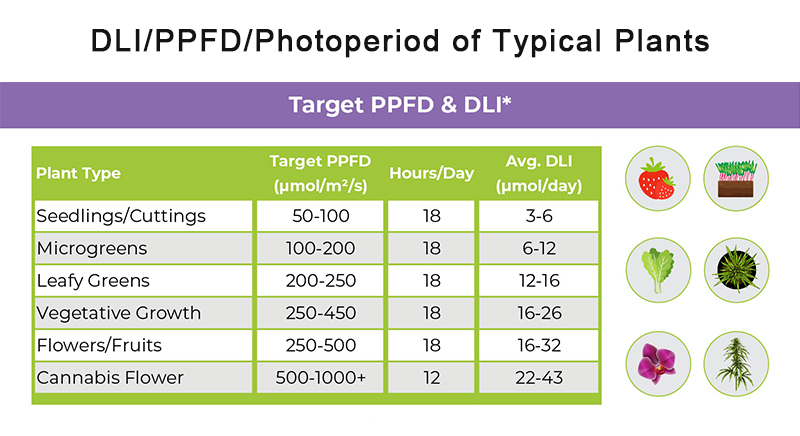
Leafy greens do not require such high PPFD level as cannabis. An average PPFD about 200-300 μmol/m2/s with a daily lighting period of 16-18 hours is enough for the fast and healthy growth of most leafy greens.





















